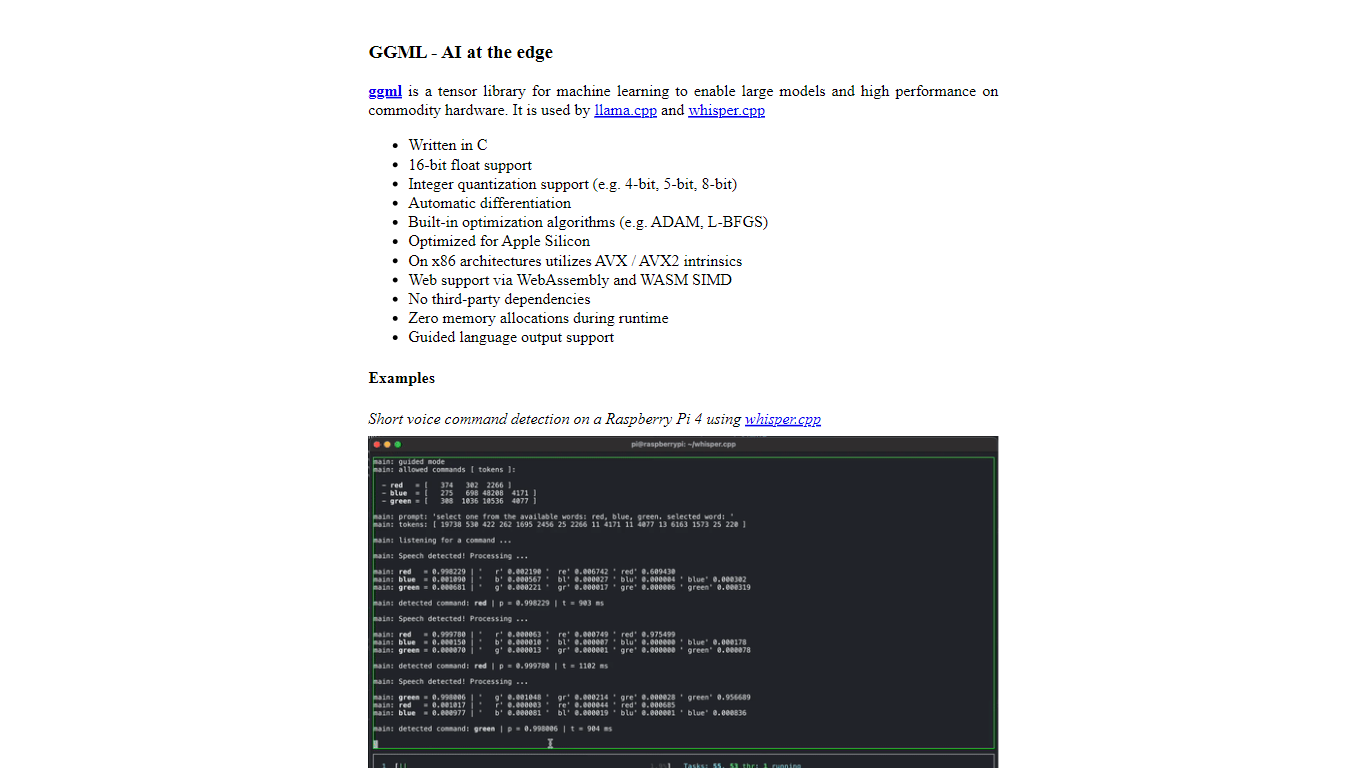XLNet vs ggml.ai
Dive into the comparison of XLNet vs ggml.ai and discover which AI Large Language Model (LLM) tool stands out. We examine alternatives, upvotes, features, reviews, pricing, and beyond.
When comparing XLNet and ggml.ai, which one rises above the other?
When we compare XLNet and ggml.ai, two exceptional large language model (llm) tools powered by artificial intelligence, and place them side by side, several key similarities and differences come to light. The upvote count reveals a draw, with both tools earning the same number of upvotes. The power is in your hands! Cast your vote and have a say in deciding the winner.
Want to flip the script? Upvote your favorite tool and change the game!
XLNet

What is XLNet?
XLNet is a ground-breaking unsupervised language pretraining approach developed by researchers, including Zhilin Yang and Zihang Dai. It introduces a Generalized Autoregressive Pretraining method that allows for state-of-the-art performance on various language understanding tasks. As an improvement over its predecessor, BERT, XLNet incorporates the Transformer-XL architecture, which is particularly adept at handling long-range dependencies in text. This repository, managed by Zihang Dai on GitHub, offers access to the XLNet model, with supporting code and documentation for researchers and AI practitioners to utilize and potentially contribute to the ongoing progress in language models.
ggml.ai

What is ggml.ai?
ggml.ai is at the forefront of AI technology, bringing powerful machine learning capabilities directly to the edge with its innovative tensor library. Built for large model support and high performance on common hardware platforms, ggml.ai enables developers to implement advanced AI algorithms without the need for specialized equipment. The platform, written in the efficient C programming language, offers 16-bit float and integer quantization support, along with automatic differentiation and various built-in optimization algorithms like ADAM and L-BFGS. It boasts optimized performance for Apple Silicon and leverages AVX/AVX2 intrinsics on x86 architectures. Web-based applications can also exploit its capabilities via WebAssembly and WASM SIMD support. With its zero runtime memory allocations and absence of third-party dependencies, ggml.ai presents a minimal and efficient solution for on-device inference.
Projects like whisper.cpp and llama.cpp demonstrate the high-performance inference capabilities of ggml.ai, with whisper.cpp providing speech-to-text solutions and llama.cpp focusing on efficient inference of Meta's LLaMA large language model. Moreover, the company welcomes contributions to its codebase and supports an open-core development model through the MIT license. As ggml.ai continues to expand, it seeks talented full-time developers with a shared vision for on-device inference to join their team.
Designed to push the envelope of AI at the edge, ggml.ai is a testament to the spirit of play and innovation in the AI community.
XLNet Upvotes
ggml.ai Upvotes
XLNet Top Features
Generalized Autoregressive Pretraining: Leverages an advanced method for unsupervised language representation learning.
Transformer-XL Backbone: Utilizes this architecture for enhanced handling of long-context tasks.
State-Of-The-Art Results: Achieves leading performance across numerous language understanding benchmarks.
Versatile Application: Applicable to tasks including question answering and sentiment analysis.
Active Repository: Allows for community contributions and development, fostering ongoing improvements.
ggml.ai Top Features
Written in C: Ensures high performance and compatibility across a range of platforms.
Optimization for Apple Silicon: Delivers efficient processing and lower latency on Apple devices.
Support for WebAssembly and WASM SIMD: Facilitates web applications to utilize machine learning capabilities.
No Third-Party Dependencies: Makes for an uncluttered codebase and convenient deployment.
Guided Language Output Support: Enhances human-computer interaction with more intuitive AI-generated responses.
XLNet Category
- Large Language Model (LLM)
ggml.ai Category
- Large Language Model (LLM)
XLNet Pricing Type
- Freemium
ggml.ai Pricing Type
- Freemium
